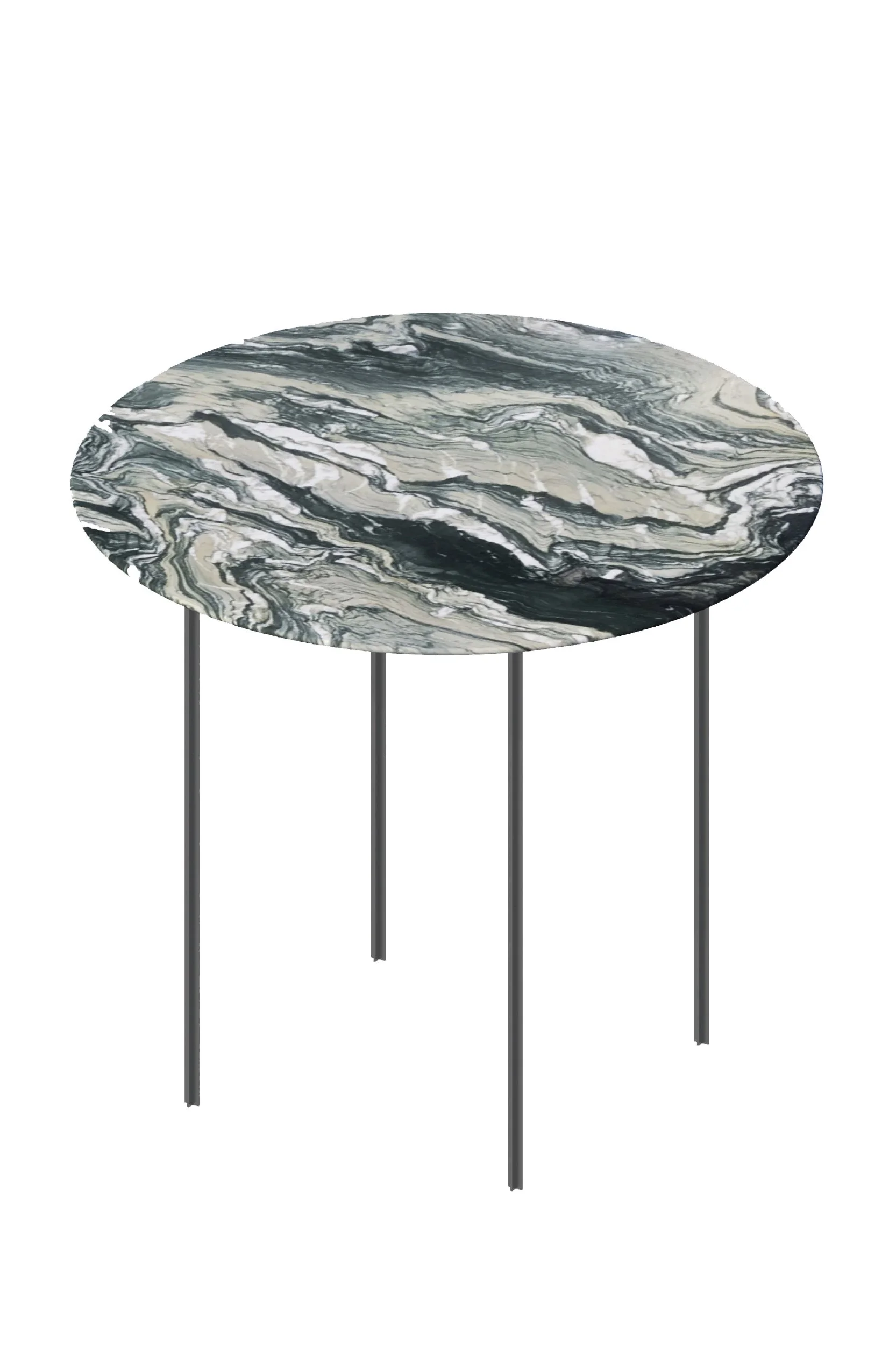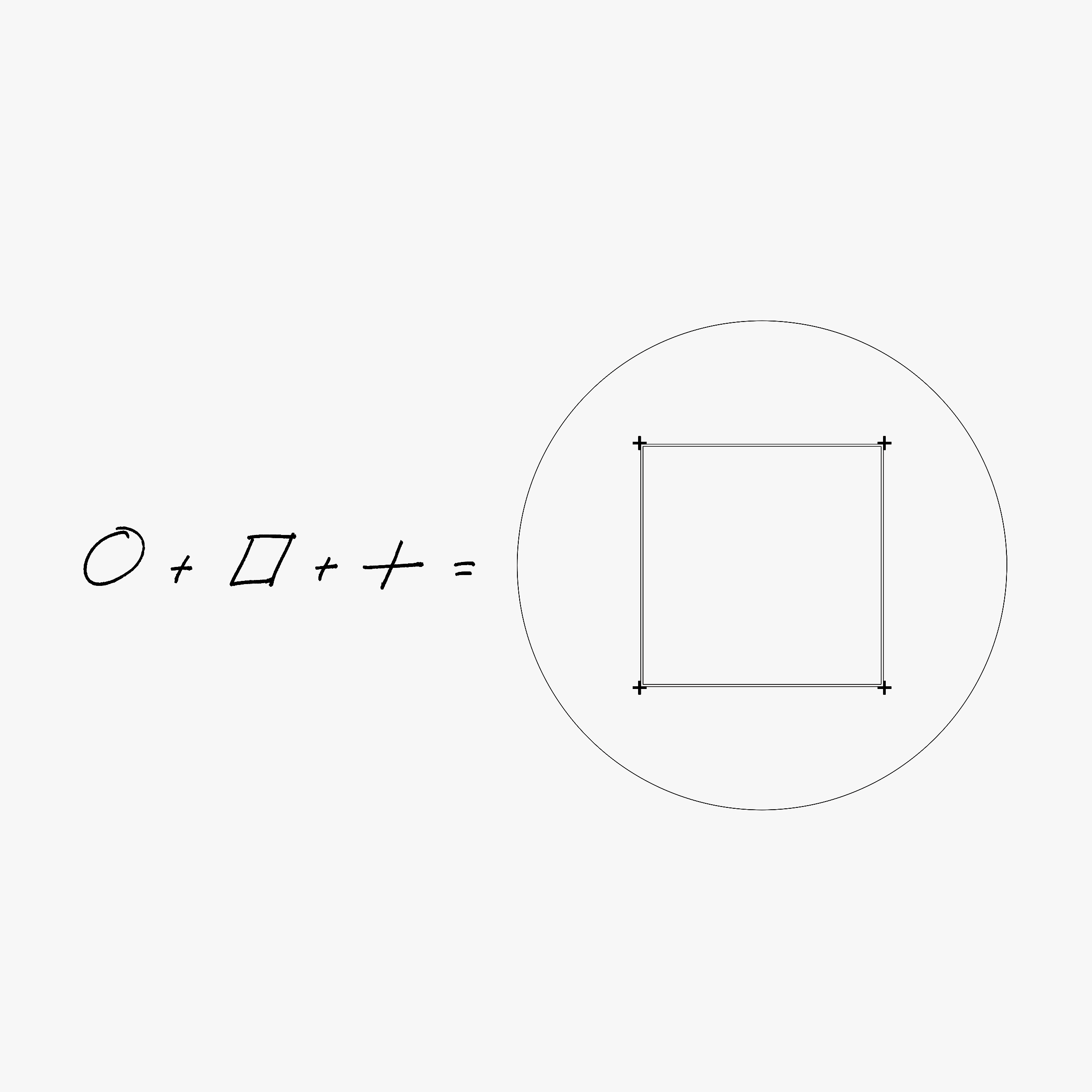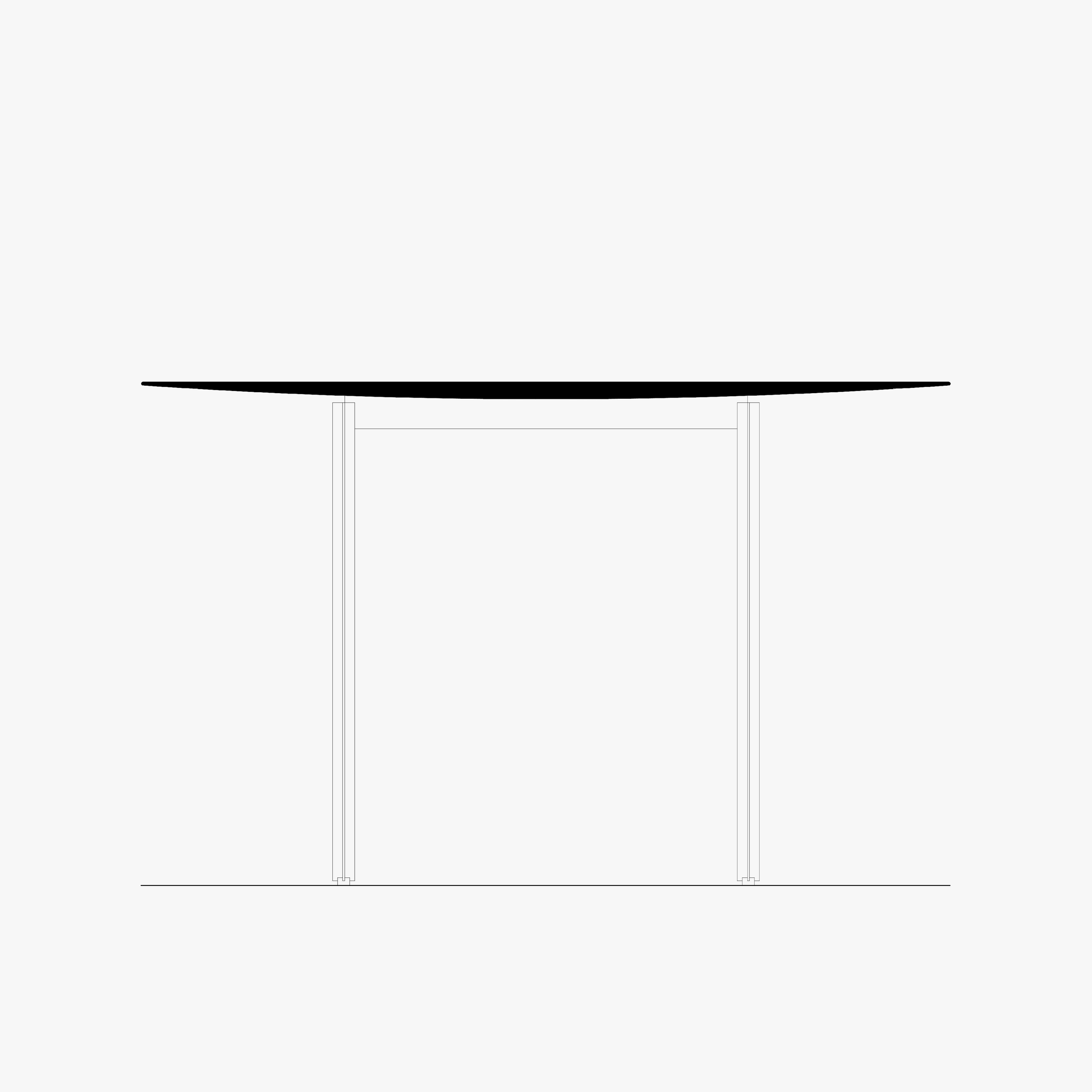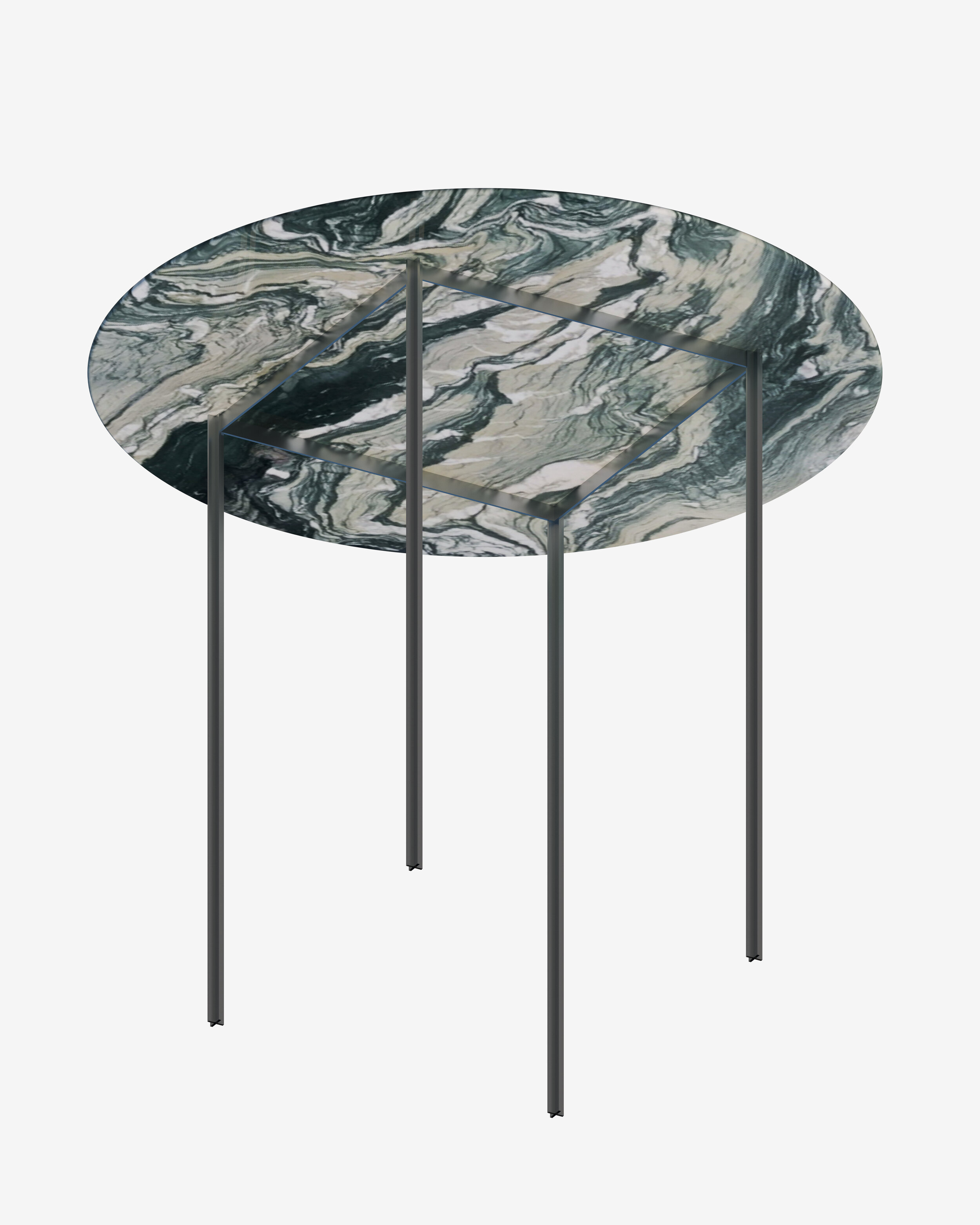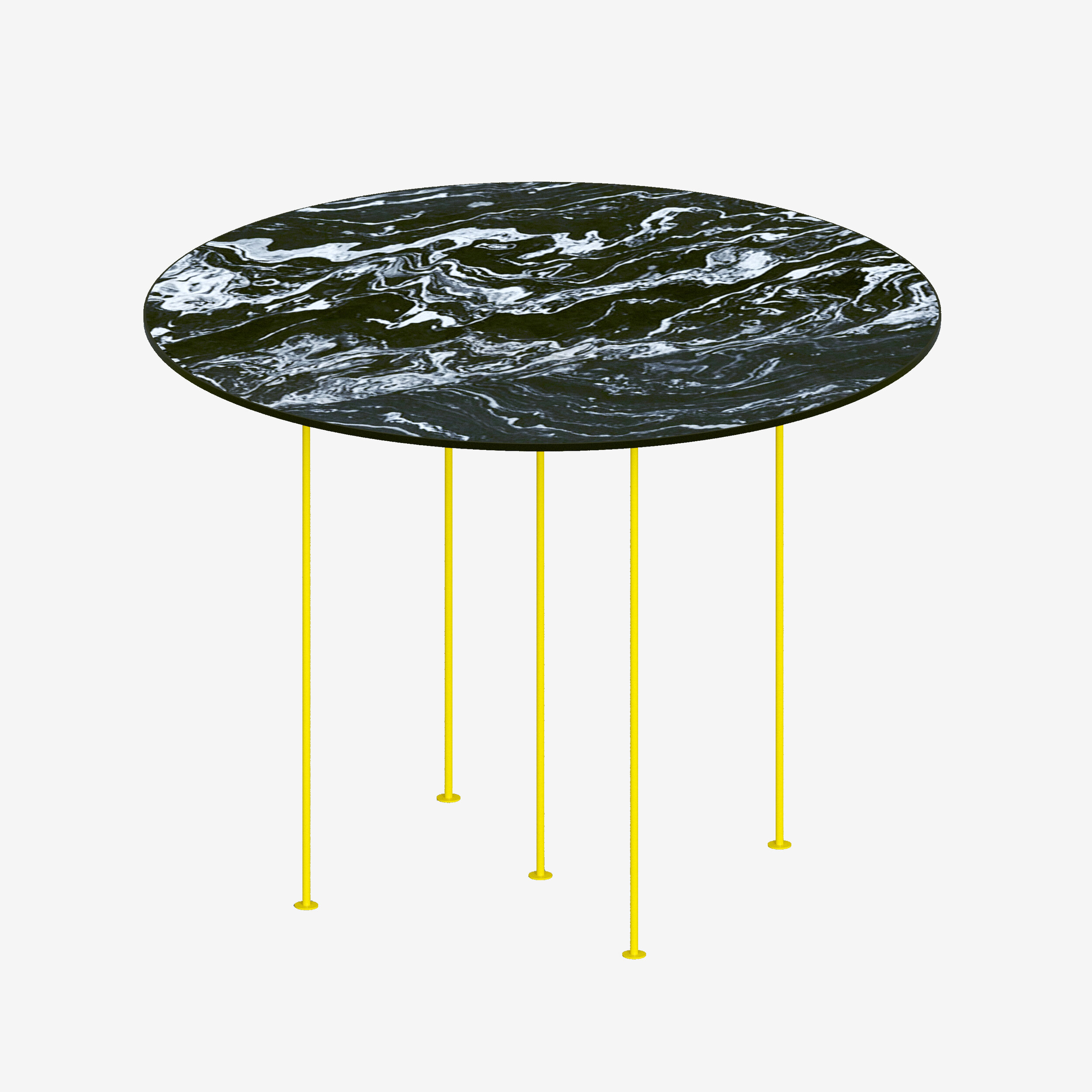Little Onion
Project number: 015
Year: 2019
Type: Dining Table
Size: 1,5 m2
Client: Private commission
The little onion dining table is named after the marble of the table plate. This marble is called Cipollino, meaning "little onion" in Italian. It was used by the ancient Greeks and Romans, whose Latin term was marmor carystium, meaning "marble from Karystos." Karystos being a coastal town on the Greek island of Euboea, where the marble was quarried. Today, marble is quarried in many different places. Cipollino marble was used in several architectural projects in antiquity and in more modern times by architects such as Adolf Loos, who used the marble in several projects, most famously in the Looshaus facade in Vienna.
The project started with an ambition to reconsider marble in relation to color. The origins of paint and color are found in the natural world. Consider the cave painting around the globe that are painted in different variations of ochre, or the more rare pigments such as cobalt or ultramarine that derives from geological sources, or even tyrian purple that derives from the Murex snail that allegedly was eaten by the dog of Heracles. Marble and paint are different representations of geology. Marble consist of dead animals, plants and other natural components that are pressed together and heated to such an extent that the color from the animals and plants is squeezed out and imprinted on the stone, producing something like a fossilized mix of different pigments.
Paint also have many associations. Each color has the capacity to communicate an emotion or at least the representation of an emotion. To feel "blue," or the positive energy from a "yellow" object, why some politician prefers to wear a red tie, and so on. Architecturally speaking, color is also a powerful tool and an economically reasonable way to stir emotions. The first studies consisted in finding a type of marble and then marrying this marble with the appropriate color. Learning that the process of painting the steel would increase the production costs, a pure steel option was also made as a more reasonable alternative. In the last version, the edges of the table plate are rounded to expose the stone's three-dimensional, sculptural capacities. At the same time, the legs are left as an exposed stainless steel surface or with a colored enameled surface that compliments the marble plate.
Sketch / Explaining the geometric components of the table.
Plan / View of the table seen from below, cut through the legs.
Section / Cut through the middle of the table.
Detail / Variations on how to construct the legs.
Sketch / Legs meeting the ground (above). Connection to frame (left). Plan view of floor detail (right).
Isometric drawing / Cipollino marble plate with cruciform steel legs.
Isometric drawing / The table seen from below.
Elevation / This elevation is based on a earlier version of the marble plate, were the plate had a different profile.
Color combination I / Nero Picasso marble (Kirsehir, Turkey), together with vermilion yellow legs. The sketch is based on a earlier version with 5 circular legs.
Color combination II / Calacatta marble (Carrara, Italy) together with cobalt blue legs. The sketch is based on a earlier version with 5 circular legs.
Color combination III / Cipollino marble (Apuan Alps, Italy) together with white legs. The sketch is based on a earlier version with 5 circular legs.
Color combination IV / Red Onyx marble (Turkey) together with red ochre legs. The sketch is based on a earlier version with 5 circular legs.
